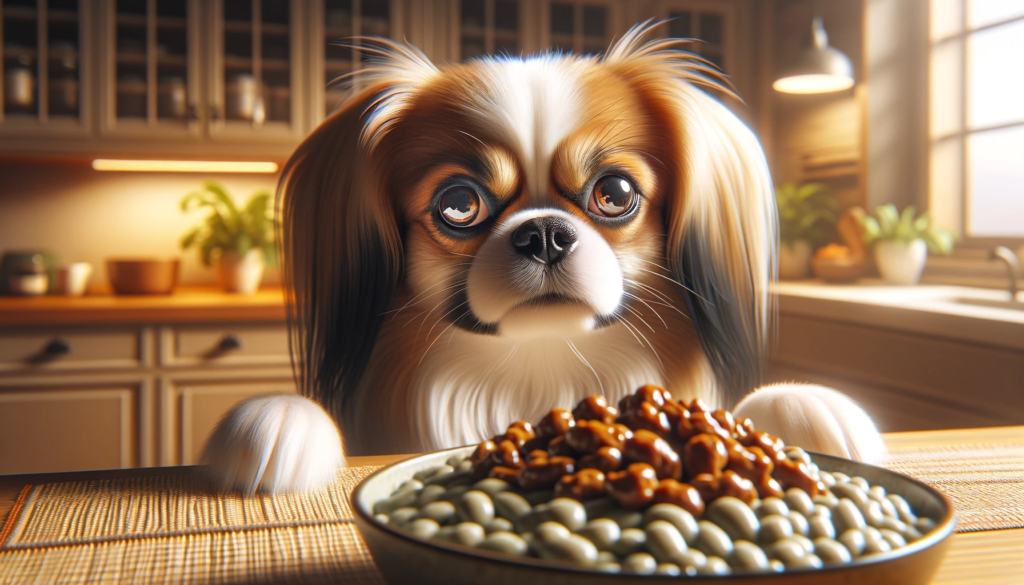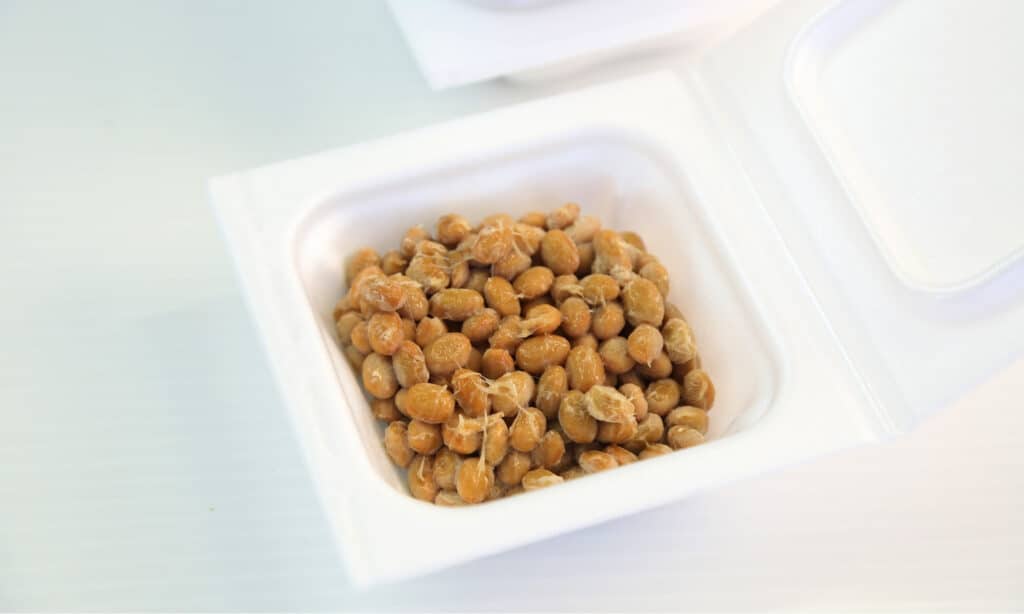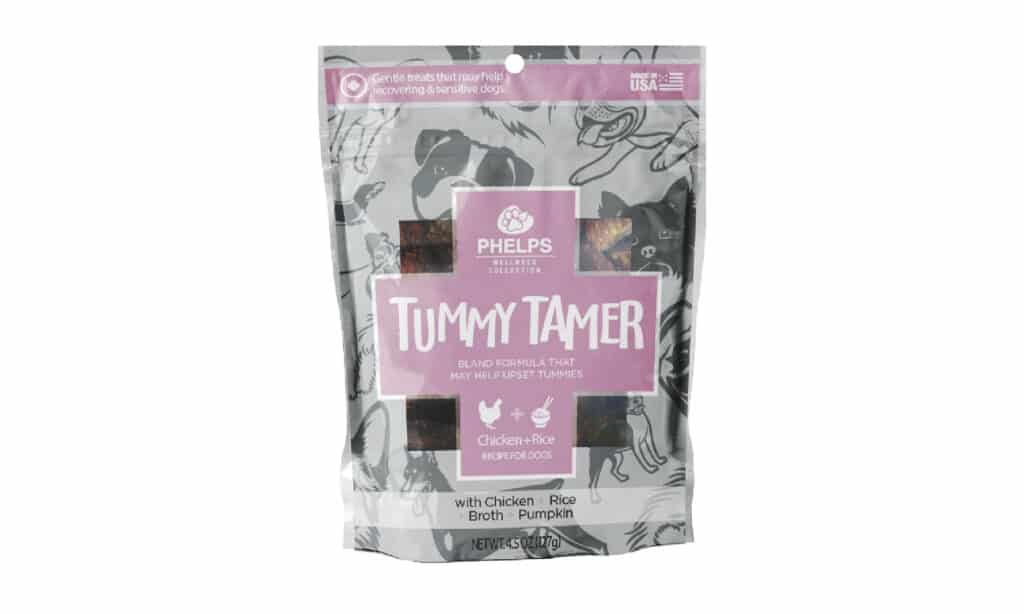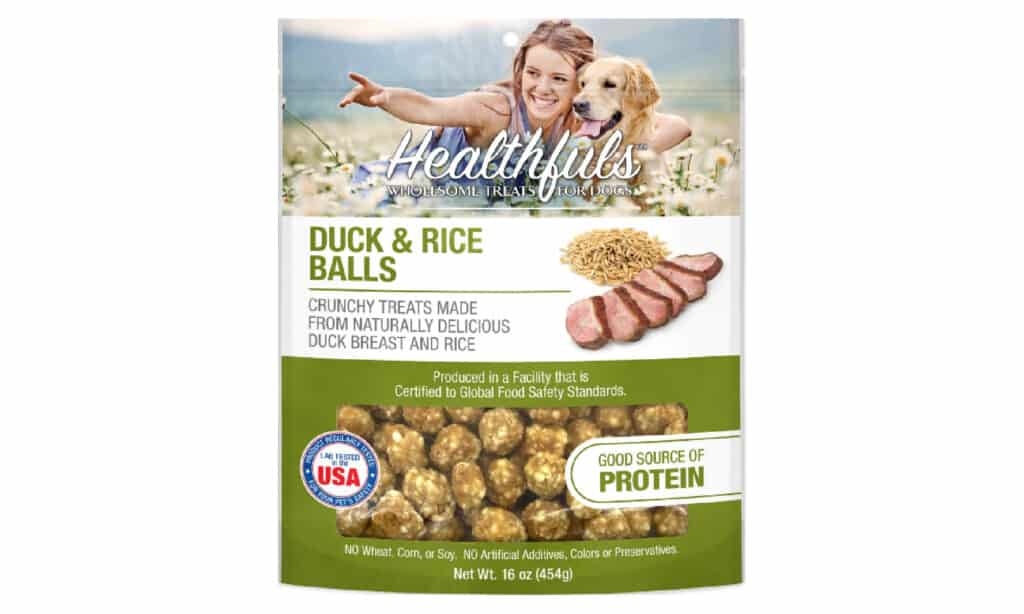If you’re a dog owner and a fan of Japanese cuisine, you may be wondering can dogs eat natto? Natto is a traditional Japanese food made from fermented soybeans and is known for its strong smell and sticky texture. While natto is a popular dish in Japan, it may not be a common food for dogs in other parts of the world.
In this blog post, we’ll explore whether or not dogs can safely consume natto and what potential benefits or risks it may have for your canine companion. We’ll also discuss some other dog-friendly alternatives to natto that you can share with your pet. So, if you’re curious about whether or not your dog can eat natto, keep reading to find out!

What Is Natto?
Natto is a Japanese dish made from fermented soybeans that has a distinct texture and aroma. Boiled soybeans are fermented with Bacillus subtilis var. natto, giving them their unique texture and flavor.
The texture of natto can be slimy and sticky, which may take some getting used to for those who are trying it for the first time. The taste is often described as nutty or cheesy and can have a pungent aroma.
In Japan, natto is a popular breakfast food and is typically served with rice and various condiments like soy sauce, mustard, and green onion. It can also be used as a topping for sushi or mixed into other dishes for added flavor and nutrition.
Although the smell and texture of natto may not appeal to everyone, it is considered a healthy food in Japan due to its high protein and probiotic content. In recent years, natto has become more popular worldwide as a unique and nutritious food option.
Can Dogs Eat Natto?
While natto is a nutritious food for humans, it’s important to consider whether or not it’s safe for dogs to eat. While there is no definitive answer to this question, it’s generally not recommended to feed natto to your canine companion.
One of the main reasons for this is the fact that natto is a soy-based product, and many dogs are allergic to soy. Additionally, natto has a sticky, slimy texture that may be difficult for dogs to digest, leading to potential gastrointestinal issues.
Another consideration is the strong odor and taste of natto, which may not appeal to many dogs. While some dogs may be curious and try a small amount of natto, it’s best to avoid feeding it to them regularly or in large quantities.
If you’re looking for a healthy treat to share with your dog, there are plenty of other options available that are more suitable for their digestive system and taste preferences. Feed your dog lean proteins, fruits, and veggies.

Are There Harmful Ingredients in Natto?
When it comes to feeding natto to dogs, it’s important to consider the potential risks associated with its ingredients. While natto is generally considered a safe and nutritious food for humans, it may not be suitable for dogs due to its soy content and sticky texture.
One potential concern with natto is its high vitamin K content. While vitamin K is essential for blood clotting and bone health, excessive amounts can be harmful to dogs taking certain medications.
Another consideration is the potential for allergic reactions to soy. Some dogs may be allergic to soy, and consuming natto may lead to an allergic reaction and potential complications.
Additionally, the slimy texture of natto may be difficult for dogs to digest and lead to gastrointestinal upset.
What Signs To Watch For If Your Dog Accidentally Ate A Lot of Natto?
If your dog accidentally eats a lot of natto, there are several signs that you should watch for that may indicate a potential problem. Natto is safe for humans, but not suitable for dogs due to soy and sticky texture.
One of the first signs to watch for is vomiting or diarrhea. The sticky texture of natto may be difficult for dogs to digest, and consuming too much of it may lead to gastrointestinal distress.
Another sign to look out for is lethargy or a lack of energy. If your dog has eaten a large amount of natto, they may feel unwell and exhibit signs of fatigue or weakness.
In more severe cases, your dog may experience difficulty breathing, swelling of the face or throat, or seizures. These symptoms may indicate an allergic reaction to soy or another ingredient in the natto and require immediate veterinary attention.
If you suspect that your dog has consumed a large amount of natto and is exhibiting any of these symptoms, it’s important to seek veterinary care right away. Avoid feeding dogs natto or soy-based products to prevent gastrointestinal upset and allergic reactions.
When or If You Should Go To The Vet?
If you suspect that your dog has eaten a large amount of natto and is exhibiting any signs of distress, it’s important to seek veterinary care as soon as possible. Signs to look out for include vomiting, diarrhea, lethargy, difficulty breathing, facial or throat swelling, or seizures.
If your dog is experiencing mild gastrointestinal distress after consuming natto, it may be best to monitor them closely at home and provide plenty of water to prevent dehydration. However, if the symptoms persist or worsen, it’s best to seek veterinary care.
In more severe cases, such as if your dog is having difficulty breathing or is experiencing an allergic reaction, it’s crucial to seek immediate veterinary attention. Anaphylactic reactions to food can be life-threatening and require prompt medical treatment.
If you’re unsure whether or not your dog requires veterinary care, it’s always best to err on the side of caution and contact your veterinarian for guidance. They can help you determine the best course of action based on your dog’s individual situation.

Safe Dog-Friendly Alternative to Natto:
Safe, dog-friendly alternatives to natto provide similar nutrients without risks. Options include lean proteins, veggies, yogurt, and bone broth.
Lean proteins such as chicken, turkey, and fish are great options for dogs and can provide a high-quality source of protein that is easy to digest. Add sweet potatoes, carrots, or green beans to your dog’s diet for extra fiber and nutrients.
Add plain yogurt or kefir to your dog’s food for a probiotic-rich alternative to natto. These foods contain live cultures of beneficial bacteria that can help support digestive health.
Another option is to incorporate bone broth into your dog’s diet. Bone broth is rich in amino acids and collagen, which can help support joint health and promote healthy skin and coat.
Healthy Store-Bought Options:
Natto may not be safe for dogs due to its soy content and sticky texture. Monitor for symptoms of GI distress or allergies & seek vet care if needed, should your dog eat natto accidentally.
Fortunately, there are many safe and nutritious alternatives to natto that can provide similar nutritional benefits for your furry friend. Adding lean proteins, veggies, and probiotic-rich foods like yogurt to your dog’s diet can improve their health.
As with any changes to your dog’s diet, it’s important to consult with your veterinarian to ensure that their nutritional needs are being met. Collaborate with your vet to design a diet that meets your dog’s unique nutritional needs and preferences.
~Lindsie



